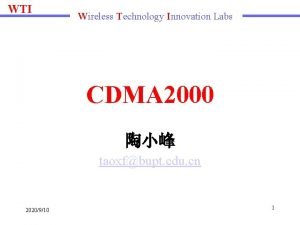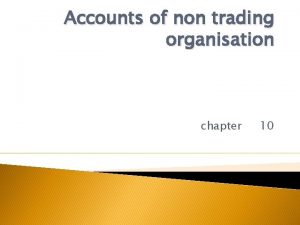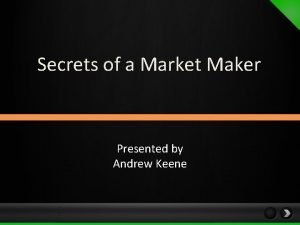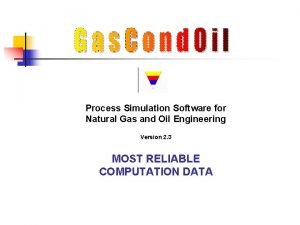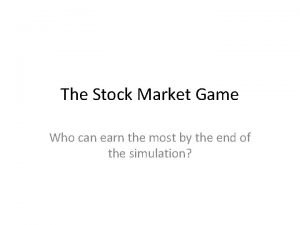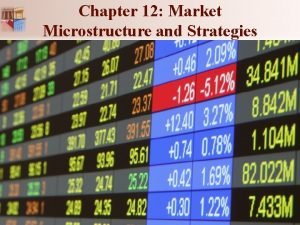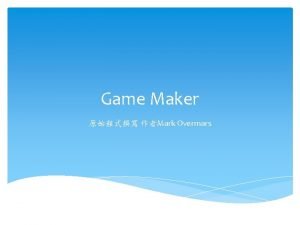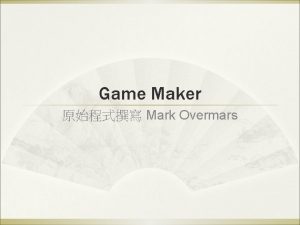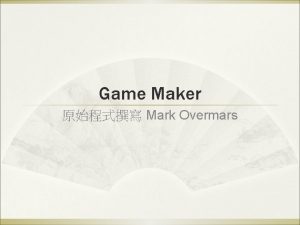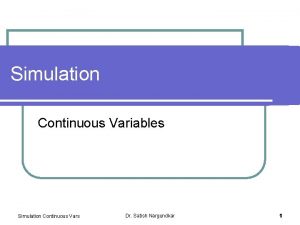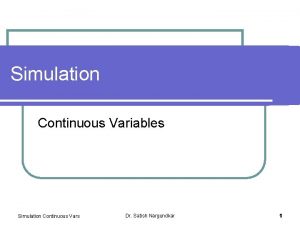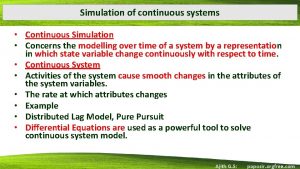WTI Market Maker Trading Simulation Model continuous trading













- Slides: 13

WTI Market Maker Trading Simulation Model (continuous trading) John Lavorato Chief Operating Officer, Enron Wholesale Services Prepared by Zimin Lu, Enron Research

Simulation Procedures The simulation model has two versions Version 1 assumes continuous trading, i. e. , close - close prices are used Version 2 assumes open-close trading, a more realistic assumption Simulation Procedure V. 2 Zimin Lu x 36388, Stinson Gibner x 34748 1) Open to Close prices are used in the simulation. 2) Number of trades due to market movement is determined by the ratio of open-to-close price difference versus the half bid-offer spread. The number of trades on a day is always equal to 3) 4) 5) 6) the daily number of trades allowed from the input. If the net open position exceeds the limit allowed, liquidation is assumed at the close price to bring the open position to be within the limit. On the maturity date of the prompt month contract, the open position is rolled over into the second near month contract. There are MAX(daily number of trade - number of trades due to market movement, 0) trades just earning the half of bid-offer spread. Rollover P/L shows the cumulative benefit or cost of rolling the open position over at contract terminations. 1

Impact Of The Assumptions Bid / Offer Spread: Higher spread, more profit Daily Number of Trades: More trades, more profit Net Open Position Allowed: NOPA does not limit open position intraday, but limit net open position carried to the next day The larger NOPA, more volatile the cumulative P/L Volume Per Trade: Amplifies the P/L Simulation Interval: Total P/L is path dependent, meaning that the P/L depends price history during the simulation 2

3

4

5

6

7

8

9

10

11

Last Words Transaction costs can be built into the bid-offer spread, so that the input reflects the “effective spread”. The model assumes that we can liquidate positions at closing price, to bring down the open position within the net open position allowed. In reality it may incur some cost due to market friction. 12
 Wti and oti setting
Wti and oti setting Wti wireless
Wti wireless Windows live movie maker interface
Windows live movie maker interface Market maker buy model
Market maker buy model Leader challenger follower nicher
Leader challenger follower nicher International marketing segmentation
International marketing segmentation Life membership fees of non trading concern is
Life membership fees of non trading concern is Present continuous interrupted
Present continuous interrupted Without information
Without information Market maker secrets
Market maker secrets Process simulation software in oil and gas market
Process simulation software in oil and gas market Kansas stock market game
Kansas stock market game Market microstructure trading strategies
Market microstructure trading strategies Stock market virtual trading
Stock market virtual trading

